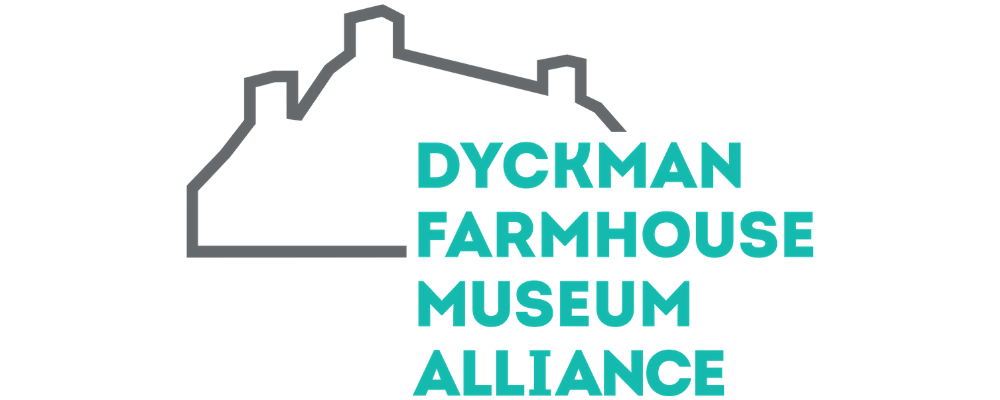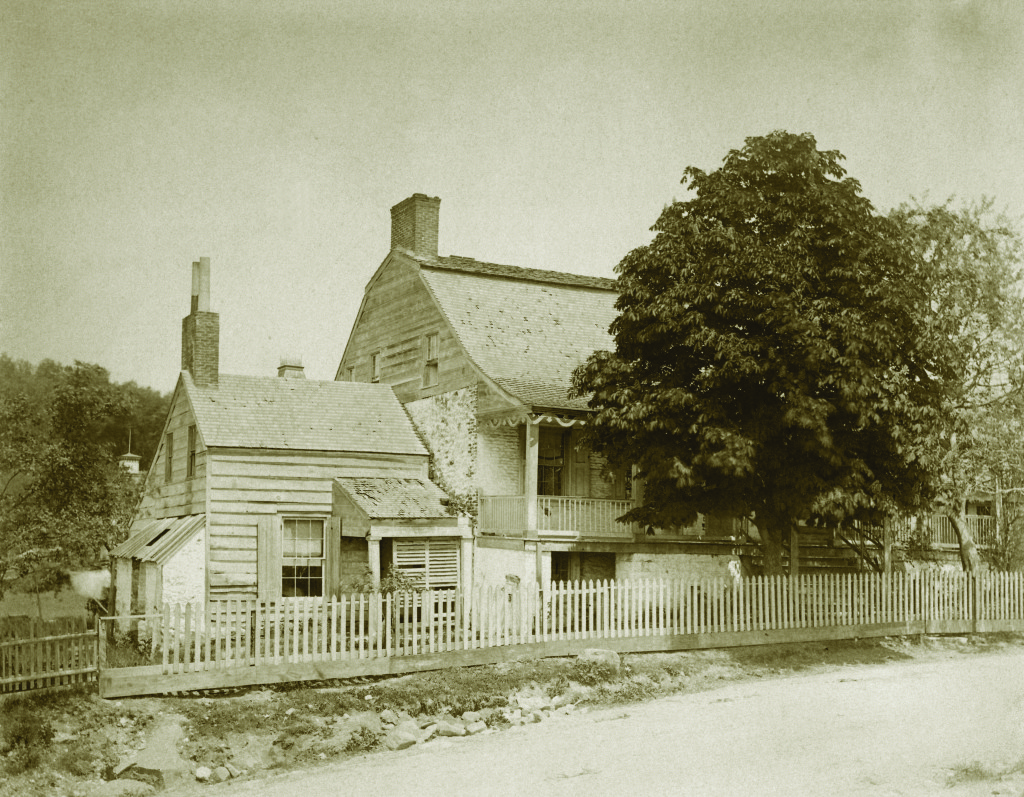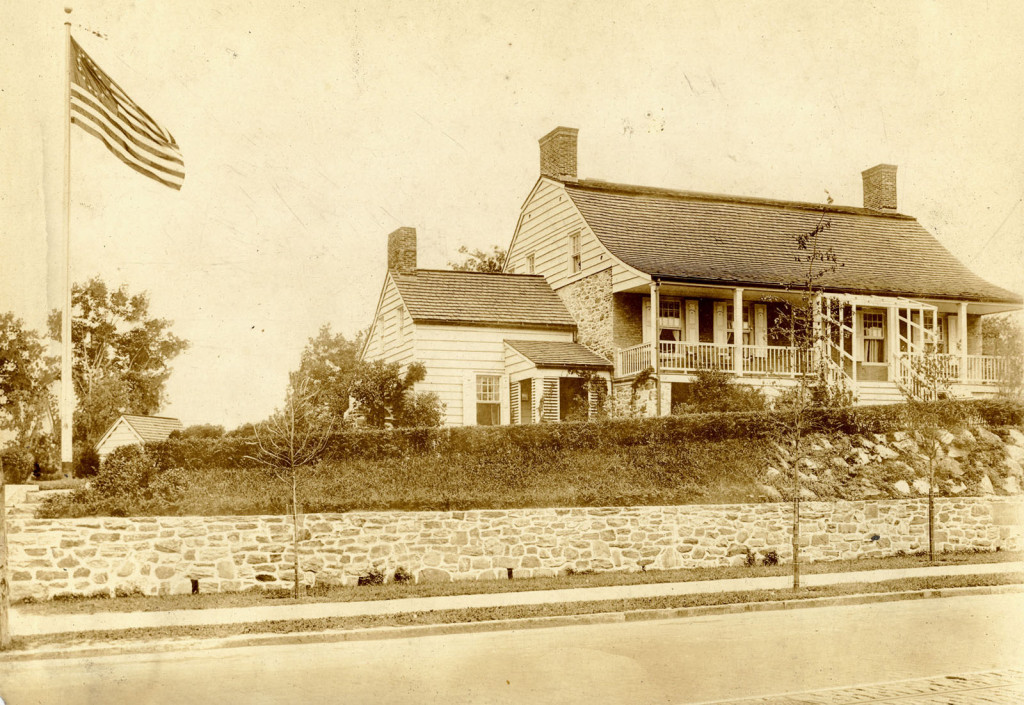The Dyckman Farmhouse was NEVER moved. There seem to be several reasons for this persistent myth:
* This is not the first Dyckman family home. Jan Dyckman, the first Dyckman to arrive in the 1660s, had nine children and 25 grandchildren. With a quickly expanding family, there were multiple houses identified as Dyckman homes over the years. At the northern tip of Manhattan, what is now known as Inwood, the family had at least one house, but possibly two, prior to the Revolutionary War. One of these was the home of William Dyckman, a grandson of Jan. William’s home was located on the Harlem River roughly near present-day 210th street. What are possibly two Dyckman houses and the neighboring Nagel house are visible in this sketch in the collection of the New York Public Library. While the Nagel house survived the Revolutionary War, no Dyckman home still stood. When William Dyckman returned to the area after the Revolutionary War he chose a new location and built a new home – the present farmhouse.
*The farmhouse sits perched above Broadway on a high embankment. Many visitors are puzzled as to why William would build his house and establish his farmyard at a point with such a steep drop-off, and rightly so. The answer? He didn’t. While the farmhouse has not been moved, the neighborhood around it has changed over time. About 1885, work began to grade Broadway – then known as Kingsbridge Road – in this rocky and hilly neighborhood. The result was that in front of the farmhouse the road was lowered about 10-12′. This left the farmhouse perched above the street with a dirt embankment separating it from the roadway. In 1915-1916, during the farmhouse restoration, a brick wall was constructed, resulting in the landscape that is seen today.
*In the early 20th century, there were suggestions that to save the farmhouse it should be moved to Isham Park. The owners of the farmhouse at the time, Mr. and Mrs. Judge, offered to donate the house for preservation with the stipulation that it be moved. This plan was detailed in a New York Times article in 1913. However, it never happened and the Judge family ultimately sold the farmhouse and the land it sat on to sisters Mary Alice Dyckman Dean and Fannie Fredericka Dyckman Welch. The sisters and their husbands restored the farmhouse without having to move it from the original location.
Sources:
“Old Dyckman Farmhouse to be Presented to City.” New York Times, November 16, 1913.
Minutes of the Board of Estimate and Apportionment of the City and County of NY, 1885. NY: Evening Post Job Printing Office, 1886.
Romer, Dorothea H. and Helen B. Hartman. Jan Dyckman of Harlem and His Descendents. NY: 1981.


